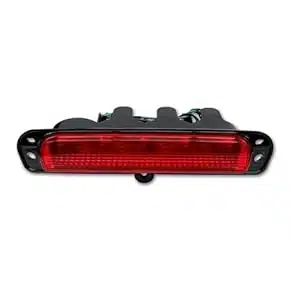Mazda RX-85: The second Japanese car that incorporates the innovative Wankel engine in its history.

The Mazda RX-85 represents an important milestone in the evolution of the Japanese automobile, being the second vehicle of its kind to equip a Wankel engine. This innovative propulsion system, characterized by its rotary design, was a continuation of the success achieved by the Cosmo Sport 110S. The RX-85, unveiled in 1967 during the Tokyo Motor Show, featured a length of 3.83 meters, a width of 1.48 meters, and a height of 1.34 meters, all powered by a two-rotor engine capable of developing 100 hp. This small coupe was a bold attempt to consolidate the use of the Wankel engine and demonstrate its effectiveness and potential in the automotive market of the time.
The Mazda RX-85 represents a significant milestone in the history of automotive engineering. As the second Japanese car to incorporate the revolutionary Wankel engine, this model embodied Mazda’s innovative spirit and dedication to technological excellence. With compact dimensions and a bold propulsion system, the RX-85 aimed to replicate the success of the Cosmo Sport 110S. Through its development, Mazda not only continued to explore the viability of the rotary engine but also expanded the boundaries of what was possible in the global automotive industry.
A compact yet powerful design
The Mazda RX-85 was projected with dimensions that stood out in the coupe market of the time. With a length of 3.83 meters, a width of 1.48 meters, and a height of 1.34 meters, its compact design did not prevent it from housing a powerful two-rotor Wankel engine. This system was capable of developing up to 100 horsepower, positioning the RX-85 as an effective and robust machine despite its small size.
The impact of the Wankel engine
The Wankel engine was a bold and unique choice that set the RX-85 apart from its competitors. Hailing from the tradition of the Cosmo Sport 110S, the RX-85 took the rotary engine to new horizons. The benefits of the Wankel engine, such as its smaller size and fewer moving parts, made the RX-85 a remarkably light and agile vehicle to drive.
The legacy of the Mazda RX-85
Created in 1967 and presented during the prestigious Tokyo Motor Show, the RX-85 laid the groundwork for future Mazda explorations with the Wankel engine and helped strengthen the brand’s reputation in the automotive world. Years after its conception, Mazda continued to bet on emission-free engines, demonstrating that the legacy of the RX-85 was not only focused on innovation but also on sustainability.
Reflections on reliability and durability
The history of the RX-85 intertwines with Mazda’s reputation for the reliability of its vehicles, positioning it alongside other brands known for their durability and notable performance. To discover more about the durability of other car brands, you can visit this link.
Comparing engine characteristics
The RX-85 and its Wankel engine are part of a rich history of innovation in engines. Currently, there are powerful four-cylinder engines that exceed 100 hp, providing another perspective on the evolution of engines. To compare different engines and their capabilities, check out this resource.
A look at Mazda’s future
Mazda continues to be a pioneer in design and engine technology. The Mazda3 2024, for example, presents various engine options that hint at the brand’s future. Don’t miss the news about this model by following this link.
Mazda RX-85: A Decisive Step in Automotive Innovation
The Mazda RX-85 represents an essential milestone in the history of Japanese motorsport, being the second vehicle equipped with the revolutionary Wankel engine. Following in the footsteps of the Cosmo Sport 110S, Mazda sought to replicate and surpass that success with the RX-85. Compact in dimensions, it measures 3.83 meters long, 1.48 meters wide, and 1.34 meters high, and was designed as an ambitious and visionary coupe.
The two-rotor Wankel engine installed in the RX-85 is capable of developing up to 100 hp at high revolutions, a technical feat that underscored Mazda’s commitment to innovation. Although the rotary engine never managed to capture a mass market, its design and technology set an important precedent in the development of advanced engines. Mazda’s investment in this type of propulsion showed that more compact and powerful engines were possible without the usual compromises in weight and size that conventional piston engines faced.
Beyond its immediate impact, the RX-85 propelled Mazda’s ongoing interest and research in rotary engines, paving the way for future iconic models such as the RX-7. With a constant focus on innovation, Mazda even explored more environmentally friendly options decades later, such as the use of electric-hydrogen technology, demonstrating the versatility and adaptability of the rotary engine to modern demands.
The Mazda RX-85 is not only a testament to the pioneering spirit that characterizes the brand, but also a lasting influence on the evolution of Japanese automotive design. Its legacy resonates in Mazda’s philosophy, where innovation and the desire to explore new technologies are fundamental. Thus, the RX-85 remains a gem in the history of automotive engineering, reminding us of the importance of constantly seeking new frontiers in vehicle design.



